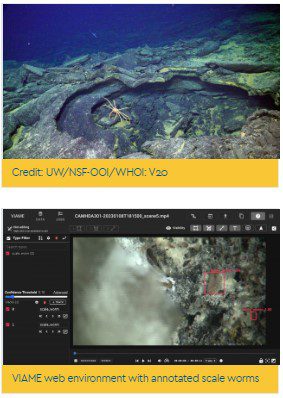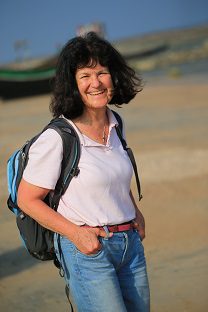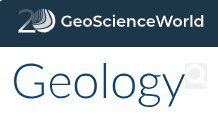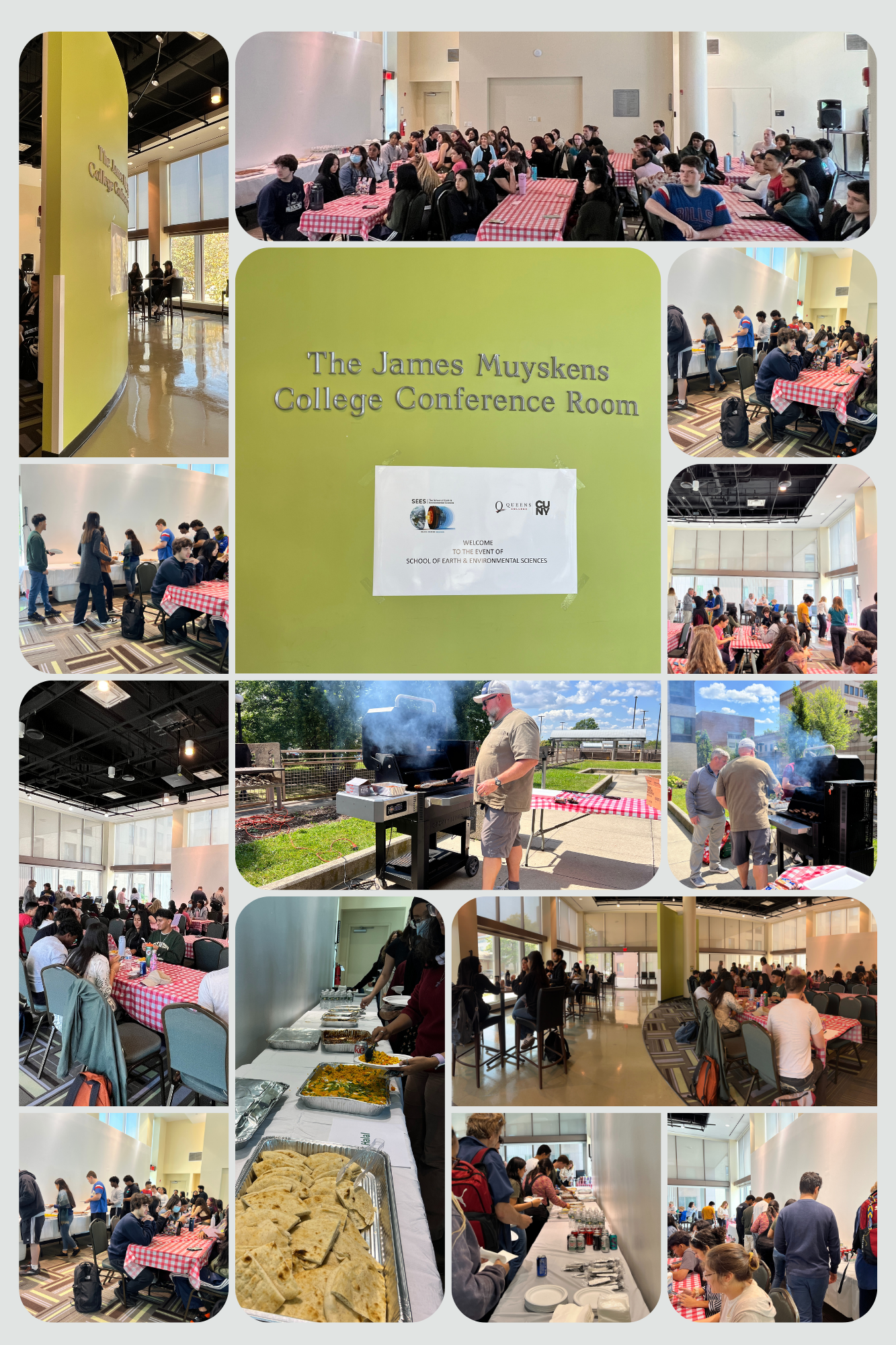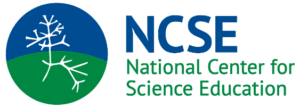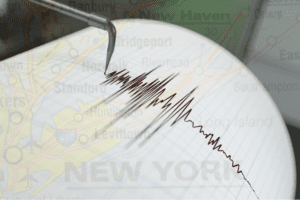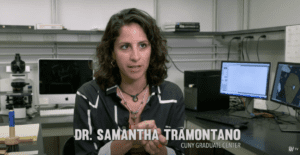News & Events
2024 FALL
WHY STUDY GEOLOGY ?
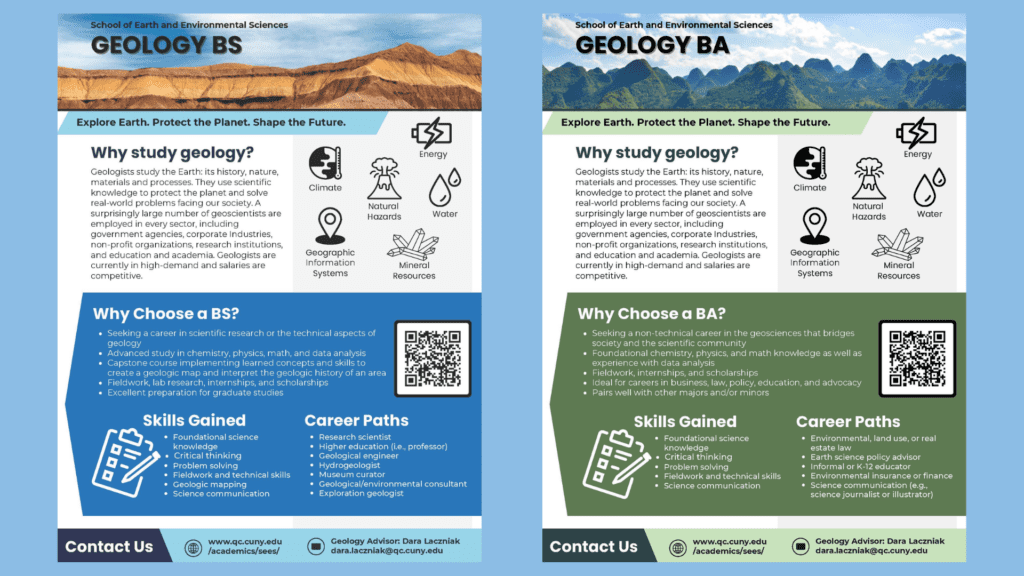
FACULTY SPOTLIGHT
Dax Soule
Assistant Professor, Seismologist, School of Earth and Environmental Sciences Queens College, CUNY
“Axial Seamount Expedition: Turning Setbacks into Triumphs”
Northeast Pacific Ocean | 46.06° N, 130.00° W | June 22, 2024

The article “The People Doing It” delves into the challenges and triumphs of a deep-sea research expedition aboard the R/V Atlantis. It highlights the team’s resilience during a high-pressure 5-day dive to study the Axial Seamount, overcoming setbacks to advance scientific discovery. With a focus on leadership, collaboration, and innovation, the narrative showcases how obstacles can inspire breakthroughs in science and engineering. Read more here.
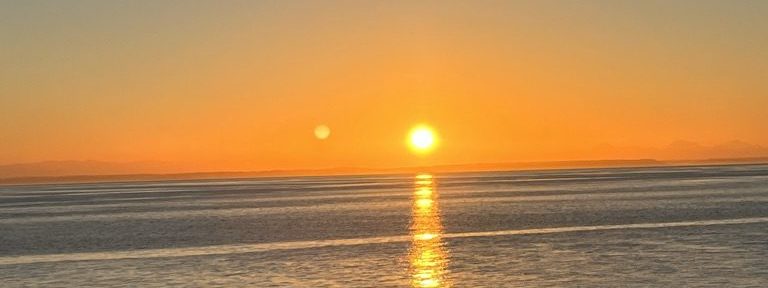
August 2024
CLASS VISIT
Gregory O’Mullan
Professor Environmental Microbiology
This summer Dr. O’Mullan’s Field Methods In Environmental Sciences class visited the Town of Hempstead Shellfish Hatchery along with demonstrations about the Town’s marine monitoring program and the Renewable Energy Park, including a tour of the solar photovoltaic facility and 100kW wind turbine that powers the facility and associated analytical laboratory.
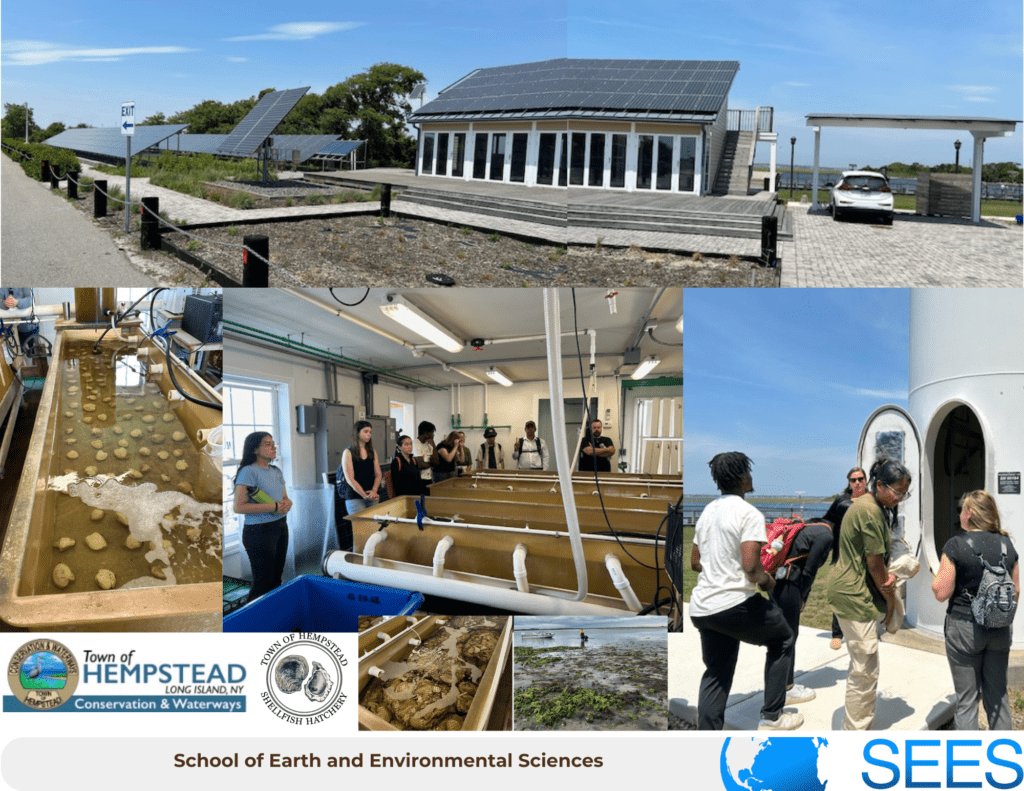
July 2024
FACULTY SPOTLIGHT
Chuixiang Yi
Professor, Meteorology and Atmospheric Science, School of Earth and Environmental Sciences Queens College, CUNY
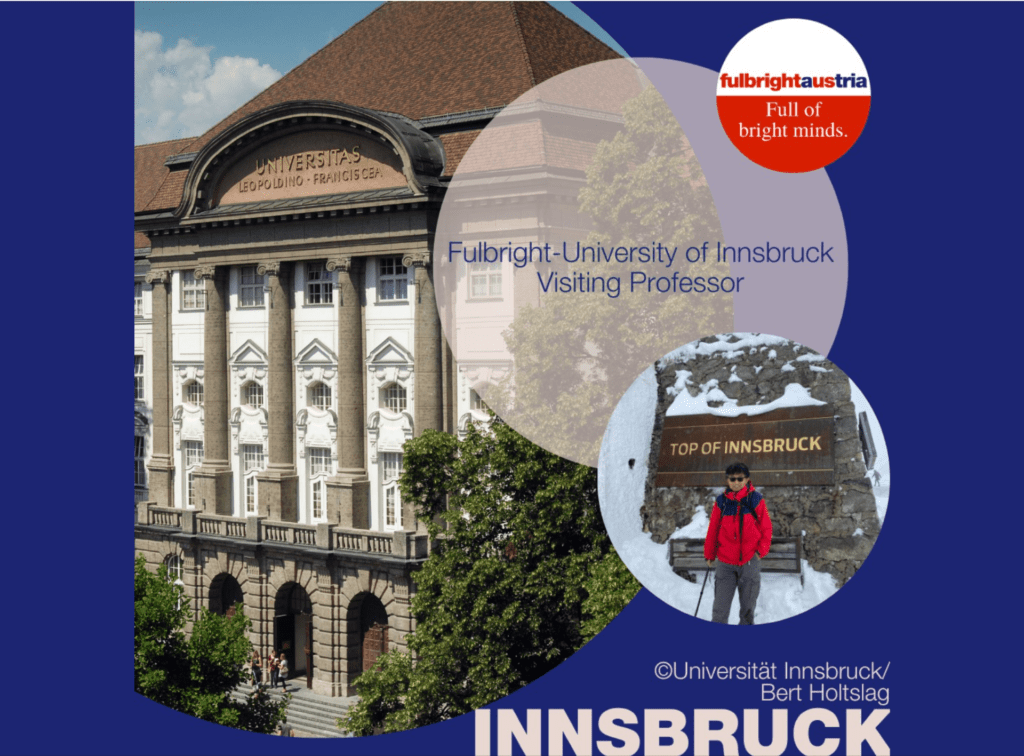 Chuixiang Yi was awarded a Fulbright scholarship for the 2022–23 academic year. His research during this time, conducted at the University of Innsbruck, has recently been published in Nature Ecology & Evolution and was featured by Fulbright Austria for its significant contribution to understanding how temperature and water availability impact ecosystem respiration and carbon emissions. Yi led an outstanding international team of climatologists, ecologists, and data scientists, whose collaborative efforts were instrumental in achieving these groundbreaking results.
Chuixiang Yi was awarded a Fulbright scholarship for the 2022–23 academic year. His research during this time, conducted at the University of Innsbruck, has recently been published in Nature Ecology & Evolution and was featured by Fulbright Austria for its significant contribution to understanding how temperature and water availability impact ecosystem respiration and carbon emissions. Yi led an outstanding international team of climatologists, ecologists, and data scientists, whose collaborative efforts were instrumental in achieving these groundbreaking results.
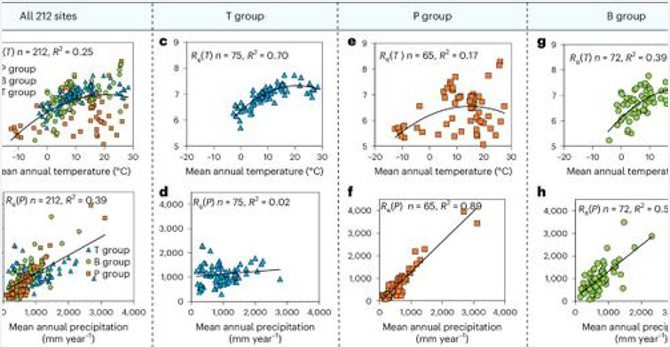
September 2024
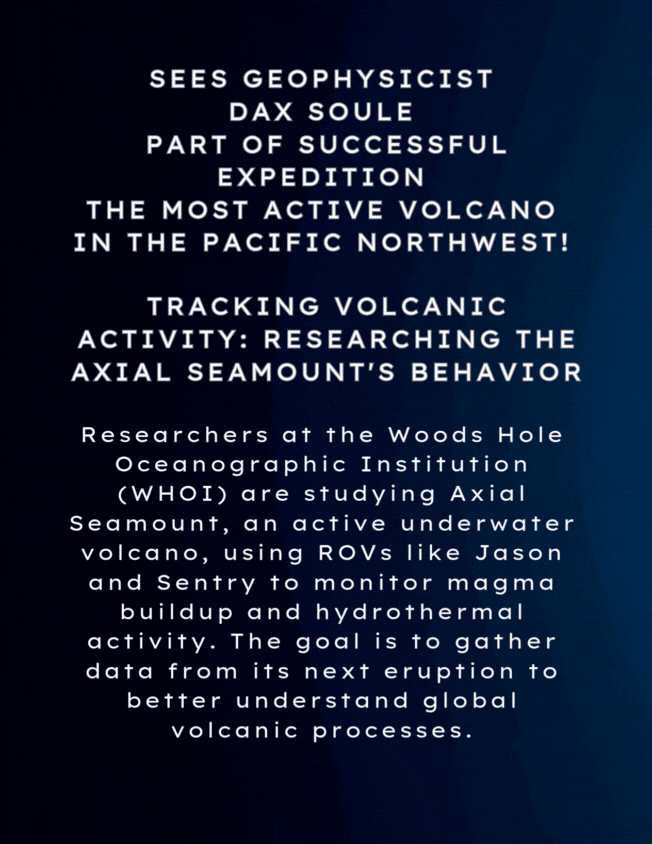
Internship Scholarship Winners
Congratulations to our SEES
Internship Scholarship Winners
Fall 2024 semester
Victoria Charles
Mariia Ihnatiuk
FEATURED CUNY MASTER'S STUDENT
Julia Sandke
Deep-Sea Biodiversity: VIAME and OOI JupyterHub Accelerate Research
This project, led by Dax Soule and Karen Bemis, studies species diversity at the ASHES vent field off Oregon’s coast using archived video from the OOI CamHD collection. Julia Sandke and a team of researchers use VIAME (Video and Image Analytics for a Marine Environment), a machine learning tool, to automate the classification of vent organisms. By integrating VIAME with JupyterHub and Nvidia GPUs, the team speeds up video analysis, enabling them to develop models that predict species patterns, especially after volcanic eruptions. This research aims to improve understanding of hydrothermal vent ecosystems.
September 2024
FACULTY SPOTLIGHT
SEES faculty latest publication
Cecilia M. McHugh
Distinguished Professor, Marine Geology and Sedimentology of School of Earth and Environmental Sciences Queens College, CUNY
Sedimentary signatures of large earthquakes along the submerged Enriquillo–Plantain Garden transpressional plate boundary, northern Caribbean.
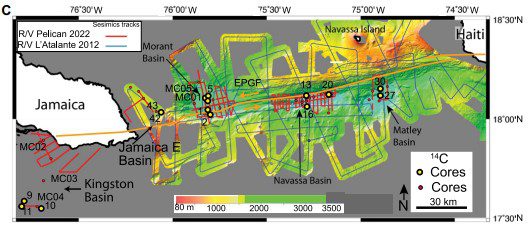
The Enriquillo–Plantain Garden fault (EPGF), part of the northern Caribbean left-lateral transpressional plate boundary, has caused major earthquakes in Haiti, including the 2010 Mw 7.0 and 2021 Mw 7.2 events. Jamaica has also experienced significant earthquakes, such as the 1692 Port Royal and 1907 Great Kingston events, but none are known from the 200-km-long Jamaica Passage segment of the fault.
A National Science Foundation Rapid Response survey mapped the EPGF in this area, collecting seismic profiles and gravity cores to identify event deposits (EDs) linked to past earthquakes. Radiocarbon dating and Bayesian age modeling revealed that 50 out of 58 EDs had overlapping ages, suggesting that these deposits resulted from large earthquakes along the fault. The recent Mw 7.2 Nippes earthquake in Haiti, combined with these findings, indicates increased earthquake hazard potential in the Jamaica Passage.
Read Full Article
August 2024
YEARLY WELCOME EVENT
SEES hosted its annual Welcome Event in the Muyskens Conference Room at the Summit Apartments.
This gathering provided a fantastic opportunity for our students to enjoy a delicious array of food, including Kosher, Halal, and Vegetarian options. Attendees had the chance to mingle with faculty and fellow students making it a perfect opportunity to catch up, meet new people, and enjoy the start of the year together.
See you at our next event !
September 2024
Climate Change Summit is
part of ENSI 99 and ENSI 100
(watch the video below for more info)
2024 SPRING
EXCITING NEWS AT SEES
NEW YORK STATE GEOLOGY LICENSE
 Geology Bachelor of Science designated as
Geology Bachelor of Science designated as
Licensure-Qualifying Program for New York State Geology License at Queens College.
The School of Earth and Environmental Sciences at Queens College is proud to announce that the Geology Bachelor of Science degree has been added as a licensure-qualifying designation and is now listed as a registered program for obtaining the New York State Geology License.
Queens College is currently the only institution in New York City to offer this to students.
This will permit students who graduate with a Bachelor of Science in Geology at Queens College to be eligible to take the exam for the New York State Geology License. Many consulting and governmental jobs in both geology and environmental science now ask prospective employees to have the New York State Professional Geologist title. Contact the geology undergraduate advisors, for more information about this exciting opportunity for Queens College students :
Dr. Pekar (Stephen.pekar@qc.cuny.edu) and
Dr. Laczniak (dara.laczniak@qc.cuny.edu)
March 2024
ConEd Scholarship Winners
Congratulations to our ConEdison Spring 2024 Scholarship Winners
- Carol Calle
- Kimberly Lutchman
- Emily Albines



FACULTY SPOTLIGHT
Dax Soul,
Assistant Professor Seismologist of School of Earth and Environmental Sciences Queens College, CUNY
provides expert commentary for CBSNewYork on aftershocks from Friday’s Northeast earthquake
“While aftershocks are a concern for this first 24, 36, 72-hour period out to about a week, the entire East Coast is a seismically active area. But most of the earthquakes are relatively small,” said Dax Soule, a seismologist and assistant professor at Queens College.
Full report on CBSnews : https://shorturl.at/jwA37
Mentioned in MSN.com : https://shorturl.at/nqDQY
Dax Soule – School of Earth and Environmental Sciences (cuny.edu)
![]()
April 2024
FACULTY SPOTLIGHT
Pedro Val,
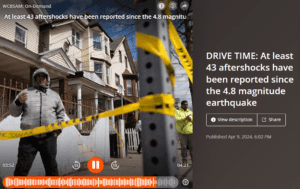
Assistant Professor Tectonic Geomorphology of School of Earth and Environmental Sciences, Queens College, CUNY
At least 43 aftershocks have been reported since the 4.8 magnitude earthquake
Pedro Val, assistant professor at the School of Earth and Environmental Sciences at Queens College, was on Drive Time with Michael Wallace to discuss the earthquake aftershocks.
Listen to the full interview below.
Interview at WCBSAM: On-Demand
Pedro Val – School of Earth and Environmental Sciences

April 2024
FEATURED CUNY GRADUATE CENTER ALUMNA
Samantha Tramontano
A CUNY Graduate Center alumna who conducted her PhD research with SEES’ professor Marc-Antoine Longpré
featured in the March 2024 edition of CUNY TV’s Urban U show, in which she recounts her close encounter with an active volcano in 2021.
Dr. Tramontano, who grew up in Staten Island, received a BS at the University of Rochester, a MS from Vanderbilt University and a PhD from CUNY. She is now a post-doctoral Fellow at the American Museum of Natural History, where she continues studying magma and volcanoes.
Read the article : STUDENTS MONITOR THE ERUPTION OF THE CUMBRE VIEJA VOLCANO: ‘IT’S HOT, AND YOU HAVE ASH ON YOU’
“One of the main directions is determining how magmatic systems evolve over time,” Tramontano said, “and why certain volcanic systems reactivate after ‘taking a nap.’”
This Urban U: a GC alum and a QC prof lend their scientific expertise from collecting the lava from an erupting volcano.
March 2024
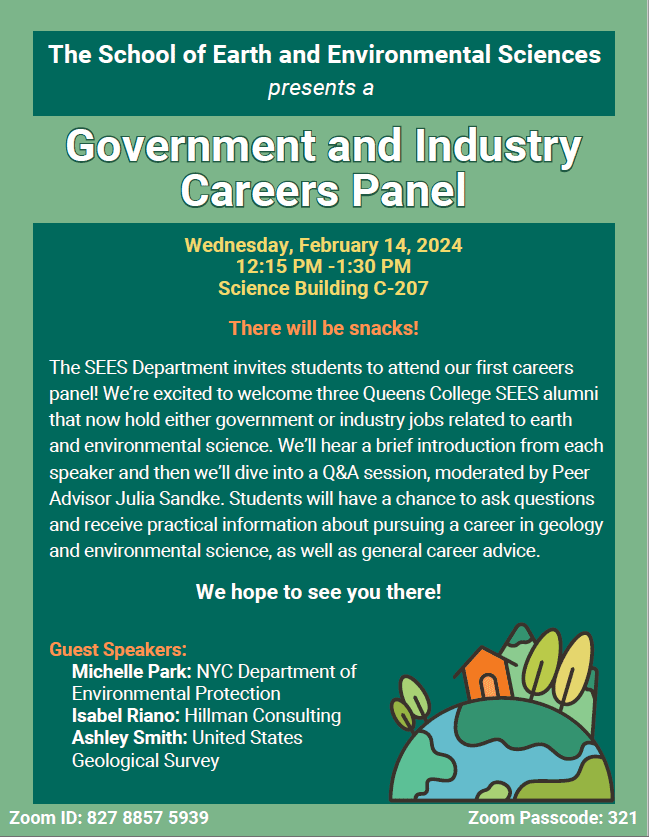
In Memoriam of Professor Emeritus Nicholas K. Coch
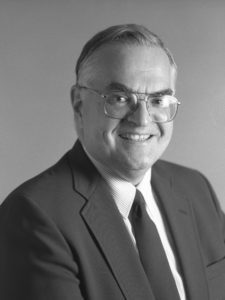 A towering geologist who warned New York of devastating hurricanes decades before Sandy.
A towering geologist who warned New York of devastating hurricanes decades before Sandy.
With profound sadness, the Graduate Center shares the news that Professor Emeritus Nicholas K. Coch (GC/Queens, Earth and Environmental Sciences) has died. A pioneering coastal geologist and longtime CUNY professor, he earned the nickname Dr. Doom and made headlines for warning, years before Hurricane Sandy, that a hurricane could devastate New York. He died on July 6. He was 86.
The New York Times reported that in 1996, during a trip to study coastal erosion in the Edgemere section of the Rockaways, Coch and his students came across strange artifacts — broken plates, beer mugs, coal — that they subsequently determined came from Hog Island, a barrier island that had sunk into the sea over a century earlier. The cause of the island’s demise, they theorized, was a powerful 1893 hurricane. The finding supported Coch’s conviction, based on sedimentary records and newspaper articles, that the New York metropolitan region was particularly vulnerable to storm surge and fierce winds from hurricanes.
Disaster management specialists, the Times wrote, dubbed him Dr. Doom for his gloomy forecast, which he articulated in a 1994 journal article, “Hurricane Hazards Along the Northeastern Atlantic Coast of the United States,” that the Times covered. On his business card, he called himself a “forensic hurricanologist — no category storm too small.”
In 2012, Hurricane Sandy inundated New York, causing 43 people to drown and an estimated $19 billion in damage.
Coch primarily studied coastal and estuarine sedimentary processes. He and his students produced the first sediment maps of Long Island Sound and New York harbor. Decades later, updated research techniques confirmed their results. Other studies published by his lab examined cliff retreat and dynamic depositional features along the north shore of Long Island.
He served as a consultant to the New York City and New York State emergency management offices. Local and national TV stations interviewed him regularly, and he appeared on several hurricane specials, including ones by the BBC, National Geographic, and the Weather Channel.
A CUNY alumnus, he received his B.S. in geology from The City College of New York and his Ph.D. in geology from Yale University in 1965.
He joined the Queens College faculty in 1967 and was appointed to the Graduate Center’s Earth and Environmental Sciences doctoral faculty in 1982. He retired from CUNY in 2017.
He co-wrote two introductory geology textbooks and a popular book on geohazards. He was a Geological Society of America Fellow and a member of the American Meteorological Society, the Society of Sedimentary Geologists, the American Association of Petroleum Geologists, and the National Association of Geology Teachers, from which he won a teaching excellence award. He was a Sigma Xi Distinguished Lecturer from 2004 to 2006.
In addition to his hurricane warnings, he was known for his towering height (at 6 feet, 7.5 inches, he wore a size 15 shoe), booming voice, and sense of humor. The New York Times reported on one of his jokes: “Informally, I might be the biggest coastal geologist in the country, skeletally at least. Having height is good. When the hurricane surges rise, I’m the last one to go.”
Bonnie Eissner,
Director of Communications, CUNY Graduate Center, beissner@gc.cuny.edu
Published by the Office of Communications and Marketing
July 2024







